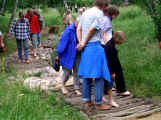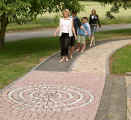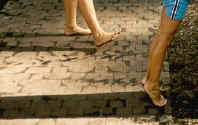Wood and stones form most solid surfaces in nature and can be arranged to provide a variety of sensations to the soles and to appeal to the eye as well.


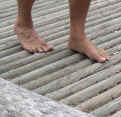

Natural logs with bark give a good sensation. Be aware to avoid gaps which could jam the toes! For a change, the logs can also be installed lengthwise.


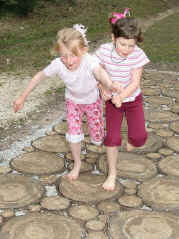
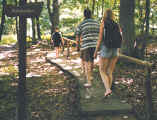

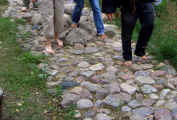
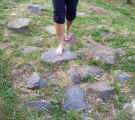


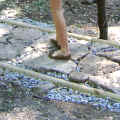
Exciting variety
Various wooden and stony materials can be placed in sequence without any problem of dispersing under the feet of the visitors.
